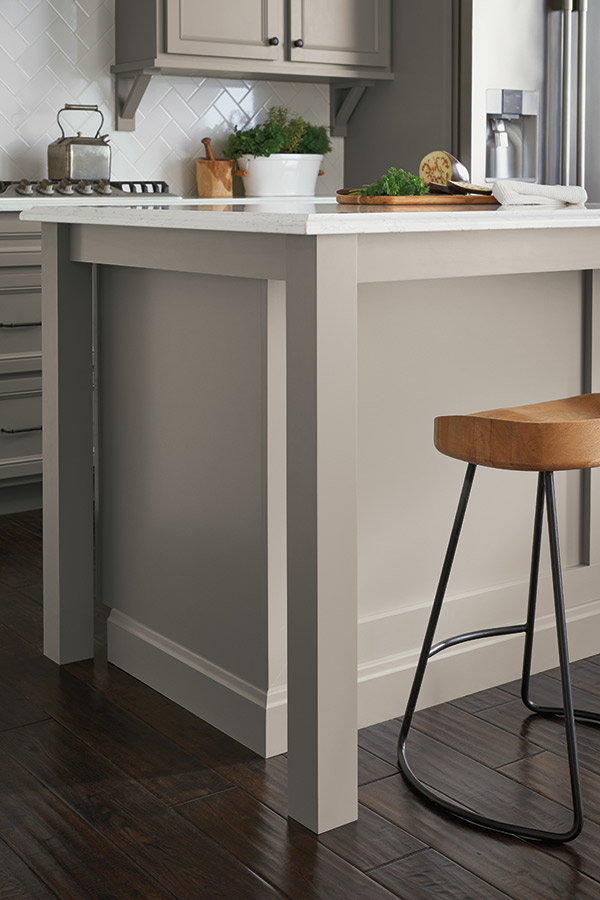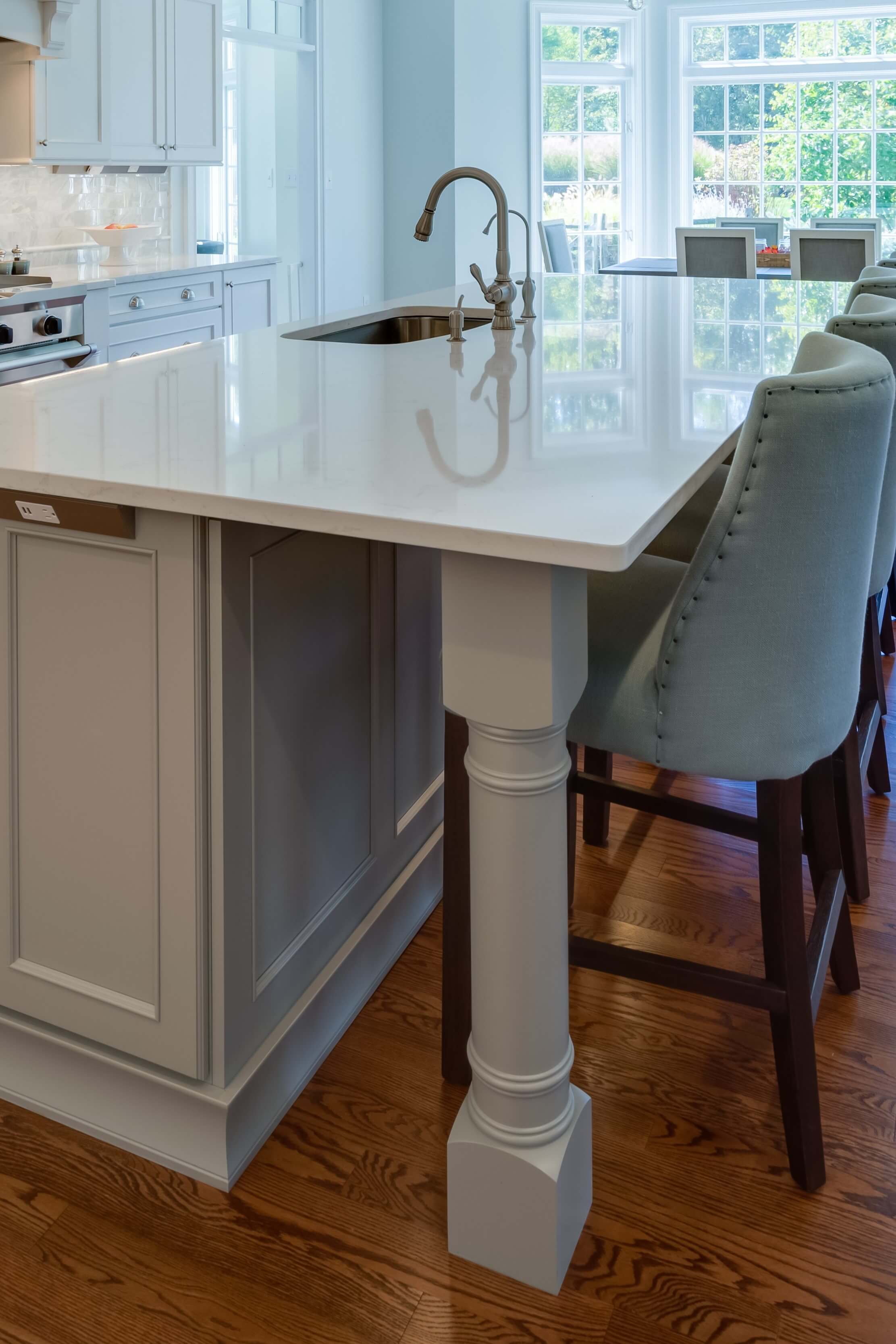Vital Variables to Take Into Consideration When Selecting Legs For Kitchen Area Island
Selecting the ideal legs for a kitchen area island entails a cautious analysis of multiple variables that can considerably affect both functionality and visual allure. As we check out these components, it ends up being clear that each choice can have far-reaching ramifications for the total kitchen area experience.
Product Options
When selecting legs for a kitchen area island, recognizing the various material alternatives is important for accomplishing both visual appeal and structural stability (Legs For Kitchen Island). The selection of product considerably affects not just the durability of the island however likewise its total design and functionality
Wood is a prominent selection, offering heat and flexibility. Solid hardwoods, such as oak or maple, supply toughness and can be tarnished or repainted to match the kitchen design. Metal legs, typically made from stainless-steel or functioned iron, add a modern-day and commercial feeling while making certain durability and stability. These products are immune to put on and can sustain significant weight, making them excellent for bigger islands.
One more option is crafted products, like MDF or plywood, which can be a lot more affordable while still providing a range of coatings. They might not offer the same degree of stability as solid timber or metal. Legs For Kitchen Island. Last but not least, products such as acrylic or glass can develop a modern look, though they might need additional assistance to ensure security.
Eventually, the selection of product for kitchen island legs need to line up with the desired performance and the overall style of the kitchen.
Design And Style

When considering style, the form and surface of the legs are critical. Tapered legs can provide a sense of agility and beauty, while thicker, extra robust legs can share strength and security. Additionally, the surface-- be it repainted, stained, or natural-- must complement the cabinets and kitchen counter materials to produce a unified appearance.
Furthermore, the style of the legs can additionally reflect personal preference. Custom or ornamental legs, such as those including intricate makings or one-of-a-kind geometric shapes, can work as centerpieces, including character and personality to the kitchen area. Inevitably, the right choice will not just boost capability but also raise the visual charm, making the cooking area island a standout feature of the home.
Elevation Factors To Consider
Selecting the ideal elevation for cooking area island legs is critical, as it straight affects both functionality and convenience. The typical elevation for a cooking area island normally ranges from 36 to 42 inches, aligning with usual kitchen counter heights.

It is likewise important to account for individuals' heights and choices. Personalizing the elevation can guarantee a comfy experience for all family participants, making the kitchen island an extra pleasurable and useful area.
Weight Assistance
Making sure adequate weight assistance for cooking area island legs is vital for both security and functionality. The kitchen area island often serves numerous purposes, consisting of cooking, dining, and added storage space, requiring a durable assistance structure. When choosing legs, it is crucial to think about the total weight capacity required based on the island's planned usage and read the materials that will be positioned on it.
The selection of material for the legs plays a considerable function in their weight-bearing abilities. Solid wood, metal, and durable compounds usually provide exceptional stamina contrasted to lighter products. In addition, the design of the legs-- whether they are straight, tapered, or have a pedestal type-- can influence their capability to disperse weight properly throughout the framework.
Moreover, the leg placement ought to be strategically prepared to improve stability. Legs positioned at the corners or with a larger base can better support heavier loads. Always speak with the producer's specs concerning tons limitations to guarantee that the legs can sustain the designated weight without compromising safety. In summary, picking cooking area island legs with ample weight assistance is necessary for producing a functional and secure cooking area.
Installation and Upkeep
Appropriate installment and maintenance of kitchen area island legs are essential for guaranteeing durability and stability. This typically entails securing the legs to the island base utilizing proper bolts, ensuring that the legs are degree and aligned.
Once set up, routine upkeep is essential to preserve the integrity and appearance of the legs - Legs For Kitchen Island. For wooden legs, regular cleansing with a wet towel and useful site application of ideal timber gloss can prevent moisture damage and preserve their surface. Metal legs may need a gentle cleaning service to eliminate grease and gunk, complied with by a dry fabric to avoid rust formation
Furthermore, inspect the legs routinely for indicators of wear or damages, such as cracks or loosened joints. Tightening screws or screws as needed can additionally extend the lifespan of the legs. By sticking to these installation and upkeep practices, home owners can guarantee that their kitchen island stays sturdy and aesthetically appealing for years to find.
Conclusion

Visual comprehensibility is critical in choosing the design and layout of legs for a kitchen island, as these aspects considerably affect the total ambiance of the space. Tapered legs can supply a feeling of agility and elegance, while thicker, more robust legs can communicate toughness and security.Picking the appropriate height for kitchen island legs is important, as it straight affects both performance and convenience. In recap, choosing kitchen area island legs with appropriate weight support is vital for producing a practical and risk-free culinary space.
In conclusion, selecting legs for a kitchen island demands mindful factor to consider of different elements, consisting of product choices, style, elevation, weight assistance, and setup.